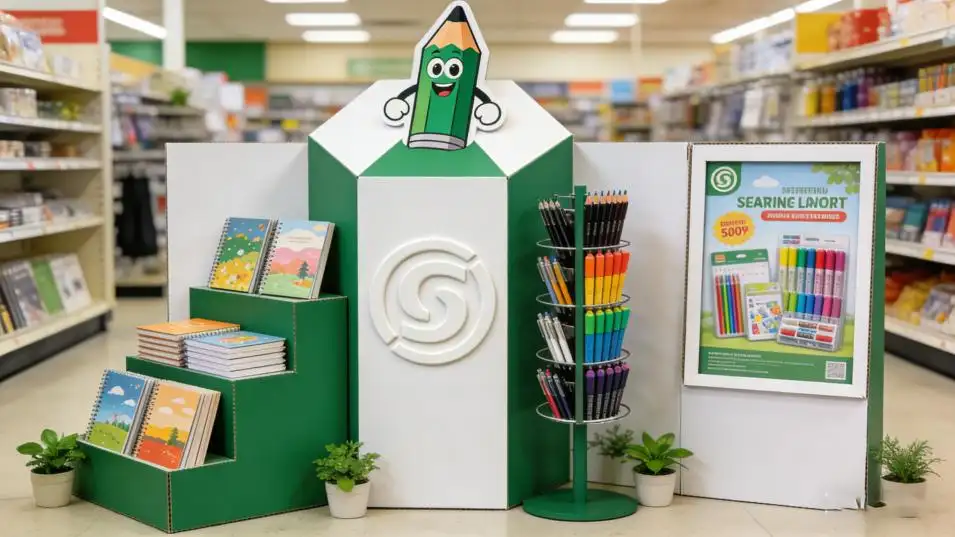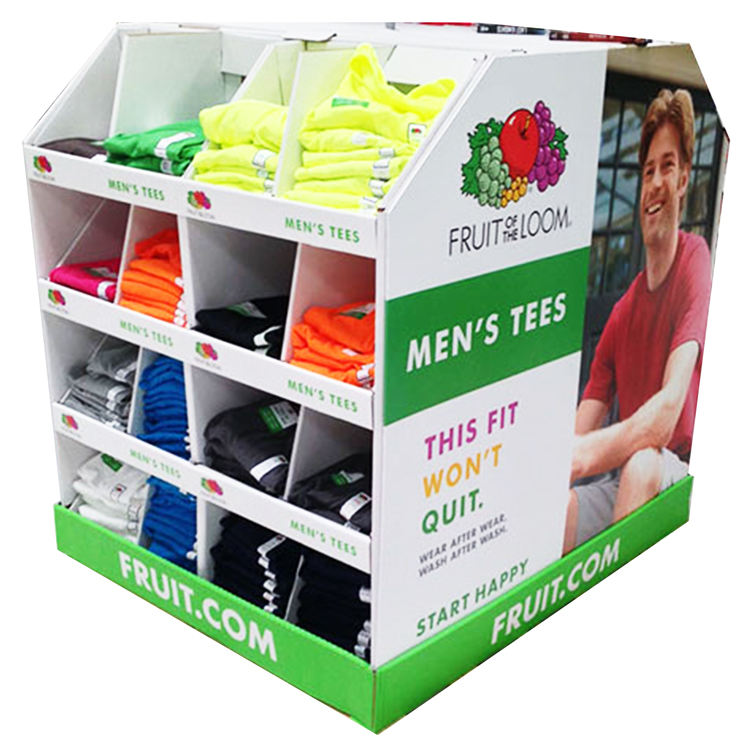Are your cosmetics getting lost on crowded shelves? Without the right presentation, even great products fail to sell, hurting your brand. The solution is choosing a display that actively sells for you.
The most effective cosmetic display stands are countertop units, floor standing display units (FSDUs), and pallet displays. Each type serves a specific purpose, from encouraging impulse buys at the checkout to creating a major brand statement in the middle of an aisle for a new product launch.
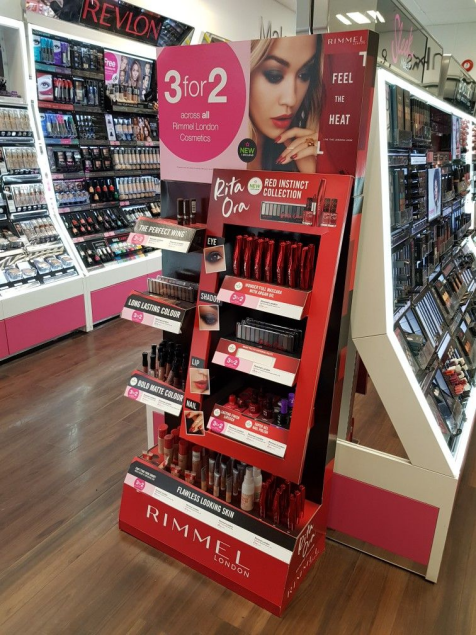
Knowing the names of the displays is one thing. But the real success comes from knowing exactly why and when to use each one. Over my 16 years in this business, I've seen that the strategic choice of a display type is what separates a bestseller from a product that gathers dust. Let’s look at which situations call for which type of display, so you can make the best choice for your product.
How Can Countertop Displays Maximize Impulse Buys?
Your small, high-margin items are getting lost on big shelves. This means you're missing easy, last-minute sales at the checkout. Countertop displays solve this by placing products right where customers pay.
Countertop displays maximize impulse buys by placing new, promotional, or small items directly in the customer's line of sight at the point of sale. This creates a "can't miss" final purchase opportunity, capturing attention when customers are most likely to add to their basket.
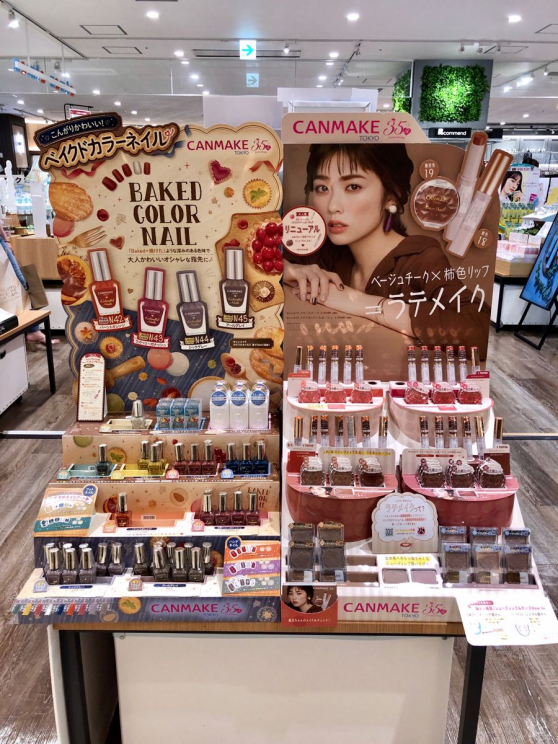
In my experience, a well-designed countertop display is one of the most powerful tools in retail. It's the final handshake with the customer before they leave the store. We're not just creating a box to hold products; we're creating a final, persuasive argument. For a designer like you, the challenge is to make that small space work incredibly hard. The key is to think about how the customer will interact with it in those few moments they spend at the counter. Is it easy to grab a lipstick? Can they try a tester? These small details make the difference between a glance and a sale. The goal is to make the decision to buy feel spontaneous and easy.
Design for Interaction
Cosmetics are a tactile product. Customers want to touch, feel, and try them. I always tell my design team to incorporate testers whenever possible, especially for foundations, eyeshadows a nd lipsticks. A small mirror can also be a game-changer. The display should invite the customer to play with the products, not just look at them. This interaction builds confidence and turns a maybe into a definite purchase.
Structure and Materials
Even though these are small, the structure must be smart. I recommend using tiered levels to show more products without taking up too much counter space. This is perfect for nail polishes or lip glosses. We often use a combination of sturdy B-flute corrugated board for the main body and add sleek VAC-formed trays to hold the products securely and give it a more premium feel.
| Feature | Benefit for Impulse Buys | My Advice for Designers |
|---|---|---|
| Tiered Levels | Increases product visibility and capacity | Sketch the product layout first to ensure each item is seen. |
| Built-in Testers | Allows customers to try before they buy | Ensure tester slots are clearly marked and easy to clean. |
| Bold Graphics | Grabs attention instantly at a busy checkout | Use high-contrast colors and a clear, simple call to action. |
When Should You Choose a Floor Display Stand (FSDU)?
You have a new product line, but it's stuck on a crowded aisle shelf. It will get lost among competitors, and your launch will fizzle. A custom Floor Standing Display Unit (FSDU) carves out dedicated retail space.
You should choose an FSDU when launching a new collection, running a major promotion, or needing a standalone brand presence. They create a "shop-in-shop" experience that interrupts customer flow in the aisles and draws significant attention to your specific products.
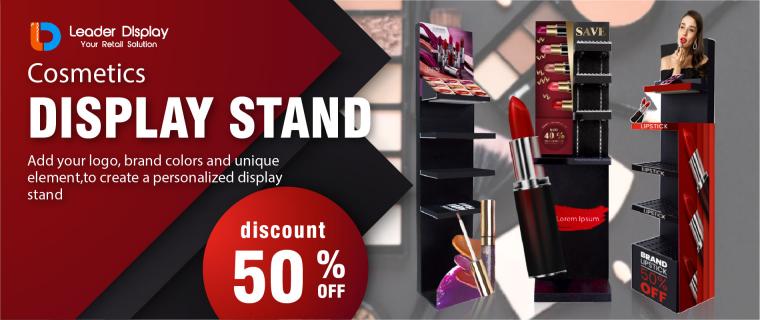
An FSDU is your brand's embassy on the retail floor. This is where you tell a story. I’ve worked on hundreds of FSDU projects, and the most successful ones do more than just hold products. They create a destination. When a customer sees one, they should immediately understand what the brand or promotion is about. For a designer, an FSDU is a beautiful canvas. You have space for lifestyle imagery, educational content, and creative structural shapes. Think beyond a simple box with shelves. Can it be shaped like your iconic packaging? Can it have a header card that lights up? The goal is to stop traffic in the aisle and engage customers who weren't necessarily looking for your product.
Structural Integrity is Key
I cannot stress this enough. Cosmetics, especially glass bottles or large gift sets, are heavy. The last thing you want is a call from a retailer that your display has collapsed. It's a disaster for the brand. We always start with the product's total weight to determine the right grade of corrugated cardboard. I often recommend using stronger B/C double-wall flute board for the main structure and load-bearing shelves. Always, always test a fully loaded prototype. Shake it, push it. Make sure it can withstand the chaos of a busy retail environment.
The Customer Journey Around the Display
An FSDU is often placed in an aisle, so customers will see it from multiple angles. A great design considers a 360-degree experience. Use the side panels for branding or telling more of your story. The back doesn't have to be blank. The "shoppability" is also critical. Are the shelves at a comfortable height? Can a customer easily reach the product at the back of the shelf? I always think about how someone will physically interact with the unit.
| Consideration | Why It Matters for Cosmetics | My Tip |
|---|---|---|
| Weight Capacity | Skincare in glass bottles and large gift sets are heavy. | Always test prototypes with the actual, full product load. Don't estimate. |
| Shoppability | Products must be easy for customers to see, reach, and grab. | Keep shelf depth around 12-15 inches. Anything deeper is hard to reach. |
| Assembly Ease | Retail staff must assemble it quickly, often without tools. | I insist on providing clear, visual, one-page assembly instructions with every display. |
Are Pallet Displays a Good Idea for Cosmetics?
You need to move a high volume of a single product for a big sale. Standard shelving can't handle the inventory, meaning constant, tiring refills for store staff. Pallet displays hold massive stock right on the sales floor.
Yes, pallet displays are excellent for high-volume, promotional cosmetic items, like holiday gift sets or "buy one, get one" deals. They often arrive pre-stocked, maximizing efficiency and creating a powerful, unmissable statement in high-traffic areas of large format stores.
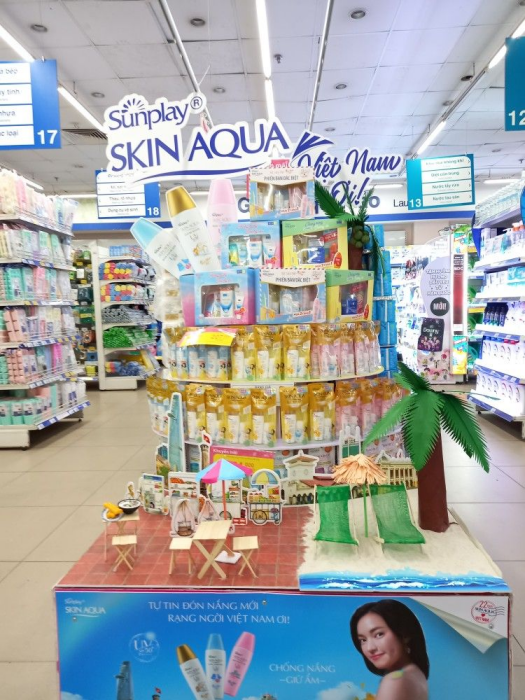
Think of pallet displays as the blockbuster movie of retail marketing. They are big, bold, and demand attention. In my 16 years, I’ve seen these work wonders for seasonal pushes, especially Christmas or Mother's Day. They are designed for efficiency above all else. They are shipped to the retailer with the product already inside, stacked and ready to go. The store staff simply removes the outer protective shroud, and it's instantly a selling machine. For a designer, the challenge shifts from intricate detail to large-scale impact. How do you use this giant canvas to scream "VALUE" or "LIMITED EDITION" from 50 feet away? The graphics have to be simple, the message direct, and the branding unmissable.
Logistics and Efficiency
The beauty of a pallet display is in the supply chain. We design it not just for the customer, but for the journey from our factory, to the warehouse, to the store. It has to be robust enough to survive shipping while being easy for a single store employee to prepare for the sales floor. This is where close collaboration between the design team and the logistics team is absolutely essential. We build these displays around standard pallet sizes to ensure they fit seamlessly into the retailer's existing processes.
Designing for Impact at Scale
With a pallet display, you have a massive surface area for graphics. This is your billboard inside the store. The design should be visible and understandable from a distance to draw customers in. Use large fonts, vibrant brand colors, and clear pricing or promotional messaging. Since these displays are often placed in main walkways, they need to be shoppable from at least three sides. We often build them in layers, so as customers buy the product, they reveal more messaging underneath. It keeps the display looking full and attractive for longer.
| Display Type | Best for... | Key Advantage | Key Disadvantage |
|---|---|---|---|
| Countertop | Impulse buys, small items, testers | High visibility at point-of-sale | Very limited product capacity |
| Floor Display (FSDU) | New launches, brand storytelling | Creates a dedicated "brand zone" | Takes up valuable floor space |
| Pallet Display | High-volume sales, seasonal promotions | Massive inventory, minimal retail labor | Requires a large retail footprint |
Conclusion
The most effective cosmetic display depends entirely on your goal. Use countertop displays for impulse buys, FSDUs for brand stories, and pallet displays for high-volume promotions. Choosing correctly drives sales.



